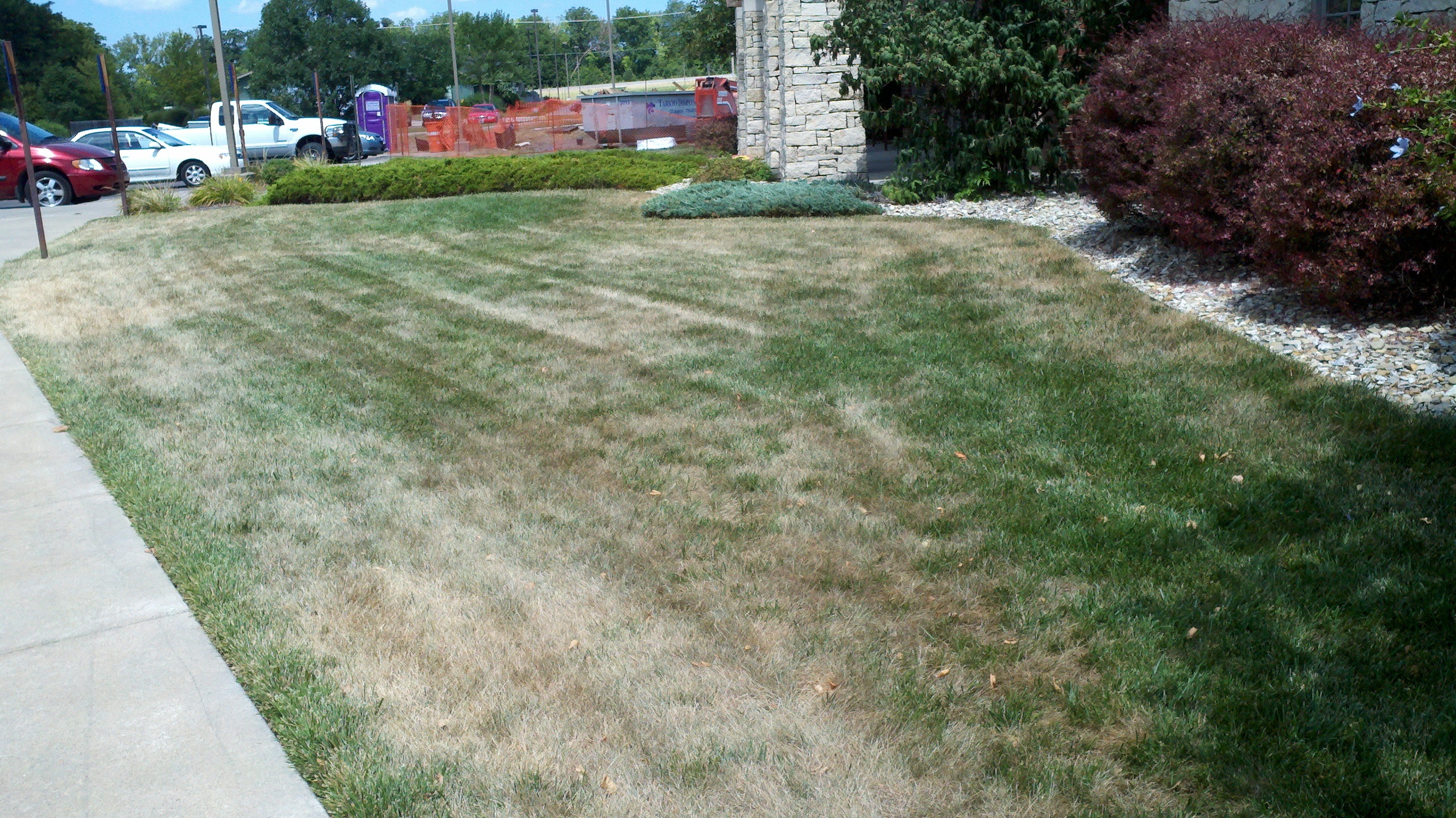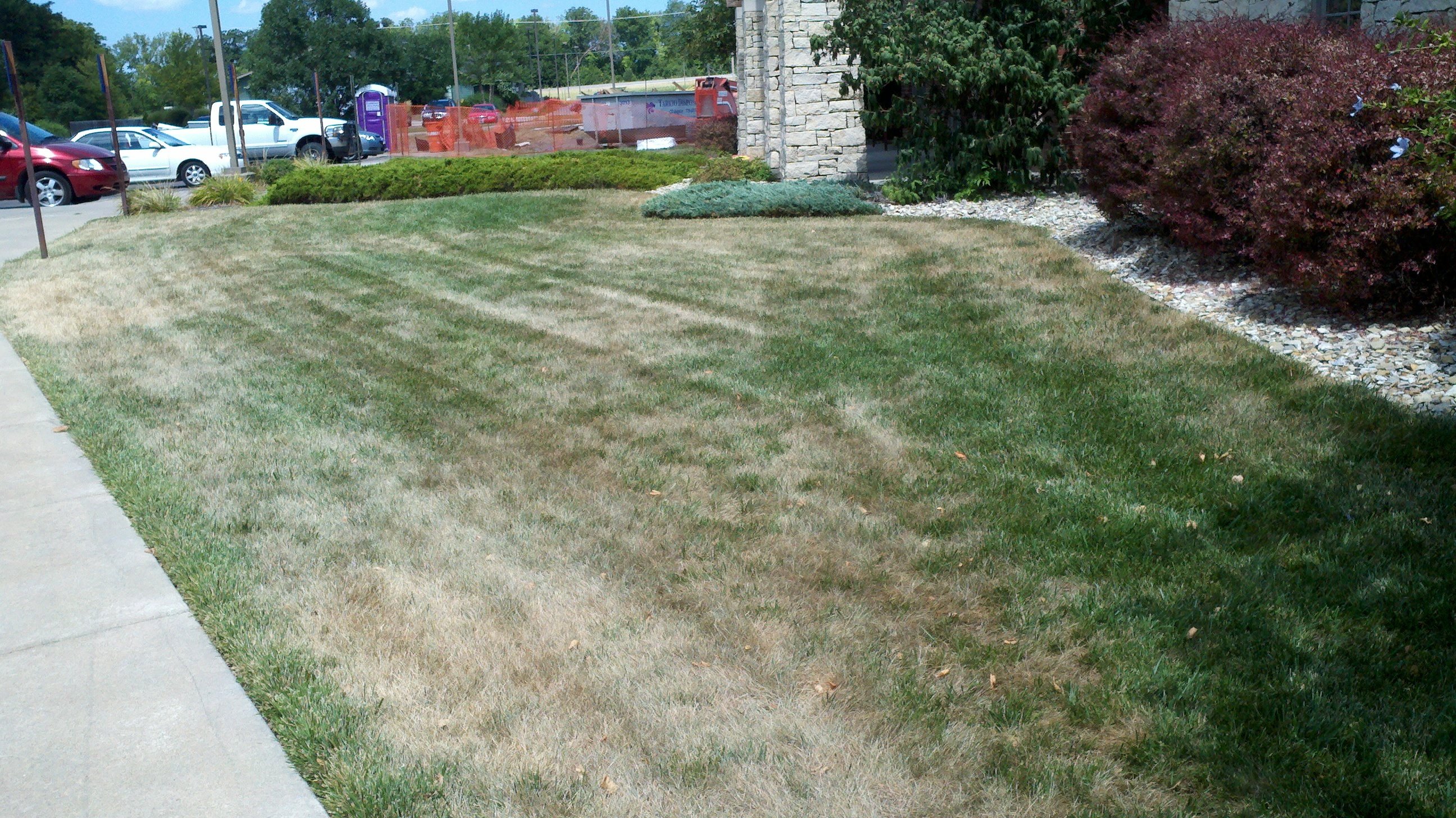
Just a few short weeks ago the grass was gorgeous and green…how quickly things change! That was before the extreme heat and drought stress inflicted its pain. Many lawns are quickly turning brown right before our eyes even with best watering and mowing practices put forth.
Simply put, cool-season lawns cannot sustain optimal health as prolonged stress conditions persist during the summer. Lawns turning brown during the summer is nothing new, and its important to understand this is perfectly normal. The appearance usually looks far worse than the condition is. This is because the lawn is lying dormant conserving energy until temperatures cool and moisture returns regularly. This state of dormancy is the natural defence mechanism that the lawn uses to survive these exact conditions.
Rest assured, lawns can stay this way for several weeks and even months depending on the grass species before any permanent damage occurs. Lawn dormancy is usually only temporary and recovery naturally takes place the stressful conditions lessen. Maintaining proper mowing and watering practices during stressful periods is important to limit any potential damage.
Watering Schedule: Your lawn requires about 1 inch of water at a time. If you apply more than that, or less, the grass will stress. Ideally, you want to avoid stressing the plant as much as possible. Even in drought conditions, you can water the lawn more frequently but never more than an inch at a time.
Water is best applied in the early morning hours before the day heats up. This prevents mold and mildew growth, evaporation, and prevents heat stress. Your lawn will not thrive if kept mown too short. A short lawn will wither and go dormant a lot faster in a heat wave than grass left longer. Ideally, raising the mower deck to 2.5-3 inches will help the grass shelter the soil keeping it cooler and moist longer. Mowing grass puts stress on the plant, so mowing during a heat wave is stress upon stress.






